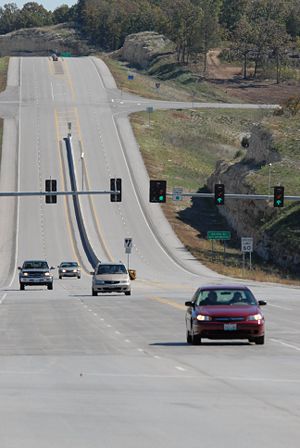Category:230 Alignment of the Roadway
The alignment of a highway or a street is represented by the manner the centerline of the roadway facility lies upon the land. It can produce a great impact on the environment, the fabric of the community, and the highway user. It is comprised of a variety of elements joined together to create a facility that serves traffic in a safe efficient manner consistent with the facility’s intended function. Chief among these elements are the horizontal and vertical alignment of the highway.
The selection of an appropriate alignment for a given highway or street is based upon the anticipated posted speed of the facility and it’s intended function. MoDOT has established criteria for horizontal and vertical alignment based upon the following types of roadways:
Other aspects of the highway are sometimes viewed as a part of the alignment. These are the width of the median, the width of the lane, the width of the shoulder, the configuration of the roadside ditch, and the slope of the roadside. These items are discussed in detail in Typical Section Elements for Roadways. Other elements of a roadway that include the number of lanes, whether it is a freeway or expressway, and whether it has interchanges or at-grade crossings are discussed in Facility Selection.
Articles in "230 Alignment of the Roadway"
The following 2 pages are in this category, out of 2 total.


